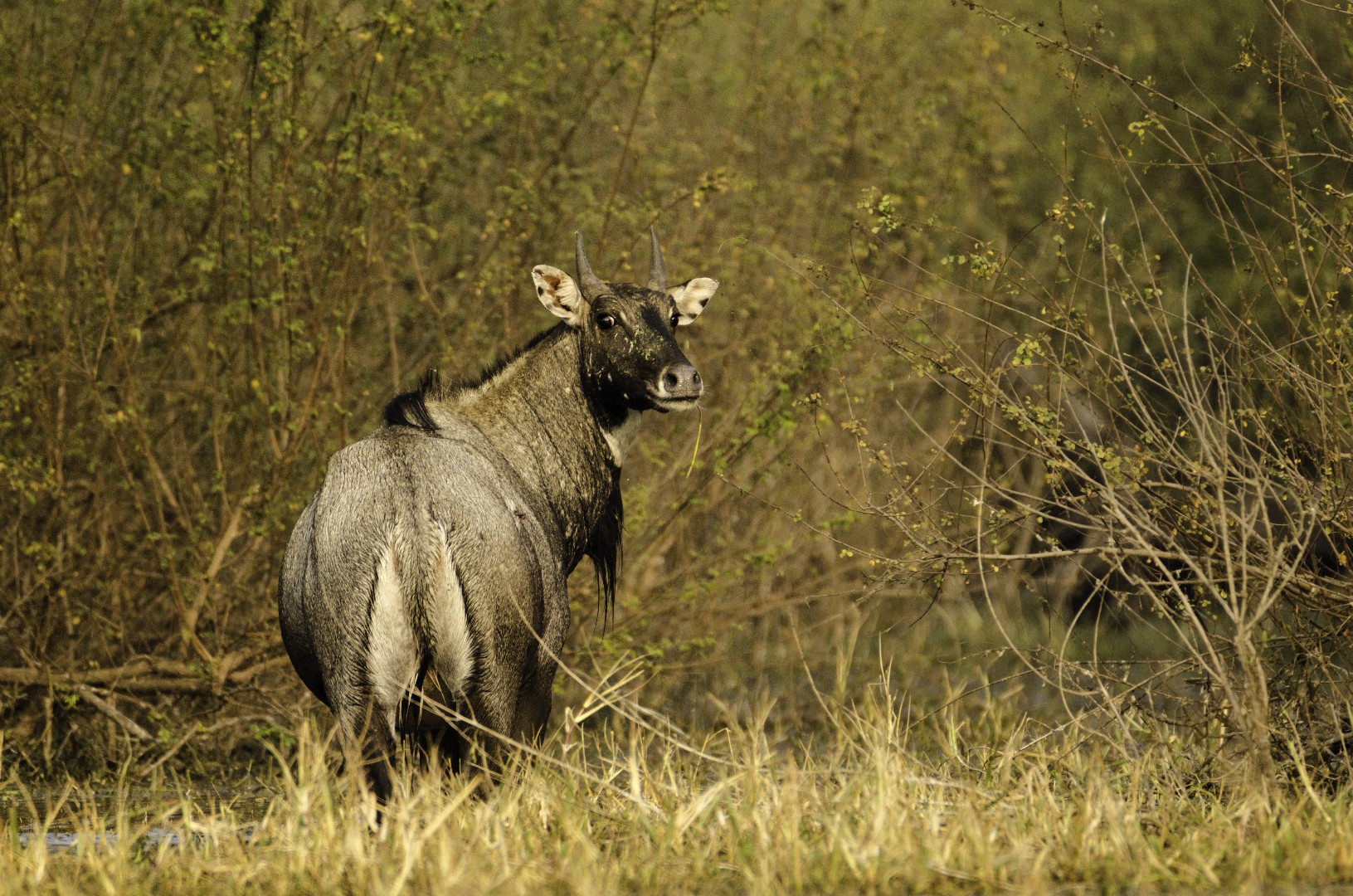Nilgai
A species of Nilgai, Also known as White-footed antelope Scientific name : Boselaphus tragocamelus Genus : Nilgai
Nilgai, A species of Nilgai
Also known as:
White-footed antelope
Scientific name: Boselaphus tragocamelus
Genus: Nilgai
Content
Description General Info
 Photo By Sourav Ghosh , used under CC-BY-SA-4.0 /Cropped and compressed from original
Photo By Sourav Ghosh , used under CC-BY-SA-4.0 /Cropped and compressed from original Description
The nilgai is the largest antelope in Asia. It stands 1–1.5 metres (3.3–4.9 ft) at the shoulder; the head-and-body length is typically between 1.7–2.1 metres (5.6–6.9 ft). Males weigh 109–288 kilograms (240–635 lb); the maximum weight recorded is 308 kilograms (679 lb). Females are lighter, weighing 100–213 kilograms (220–470 lb). Sexual dimorphism is prominent; the males are larger than females and differ in colouration. A sturdy thin-legged antelope, the nilgai is characterised by a sloping back, a deep neck with a white patch on the throat, a short mane of hair behind and along the back ending behind the shoulder, and around two white spots each on its face, ears, cheeks, lips and chin. The ears, tipped with black, are 15–18 centimetres (5.9–7.1 in) long. A column of coarse hair, known as the "pendant" and around 13 centimetres (5.1 in) long in males, can be observed along the dewlap ridge below the white throat patch. The tufted tail, up to 54 centimetres (21 in), has a few white spots and is tipped with black. The forelegs are generally longer, and the legs are often marked with white "socks". While females and juveniles are orange to tawny, males are much darker – their coat is typically bluish grey. The ventral parts, the insides of the thighs and the tail are all white. A white stripe extends from the underbelly and broadens as it approaches the rump, forming a patch lined with dark hair. Almost white, though not albino, individuals have been observed in the Sariska National Park (Rajasthan, India) while individuals with white patches have been recorded at zoos. The hairs, typically 23–28 centimetres (9.1–11.0 in) long, are fragile and brittle. Males have thicker skin on their head and neck that protect them in fights. The coat is not well-insulated with fat during winter, and consequently severe cold might be fatal for the nilgai.Nilgai – male and femaleOnly males possess horns, though a few females may be horned as well. The horns are 15–24 centimetres (5.9–9.4 in) long but generally shorter than 30 centimetres (12 in). Smooth and straight, these may point backward or forward. The horns of the nilgai and the four-horned antelope lack the ringed structure typical of those of other bovids. The maximum recorded length of the skull is 376 millimetres (14.8 in). The dental formula is 0.0.3.33.1.3.3. The milk teeth are totally lost and the permanent dentition completed by three years of age. The permanent teeth get degraded with age, showing prominent signs of wear at six years of age. The nilgai has sharp ears and eyes, though its sense of smell is not as acute. 
General Info
Lifespan
10-20 years
Diet
Nilgai, also known as the Nilgai, principally consumes herbaceous plants including grasses, leaves, and fruits. This species has a preference for geophytes, browsing vegetation during wet seasons and feeding on dicotyledonous flowering plants in dry periods. A notable aspect of its diet includes the consumption of agricultural crops, necessitating management of human-wildlife conflict.
Appearance
Nilgai is a medium-sized, tall and slender antelope with a coat of pale fawn, black, and white. It sports a dark, crescent-shaped patch on the throat. Females are hornless, while males possess spiral-shaped horns. Notable features include elongated and pointed ears, compact hooves, and an upturned tail with a dark tuft. Juveniles are a lighter shade of fawn.
Behavior
Nilgai is a primarily diurnal species, known for its territorial behavior especially during the mating season. Often seen grazing and moving in small mixed-gender herds, it shows unique adaptation to dry deciduous forests and grasslands. Notably, males are recognized for exhibiting 'rutting', a distinct behavioral phenomenon involving resonant calls and head shakes.
Population
Stable